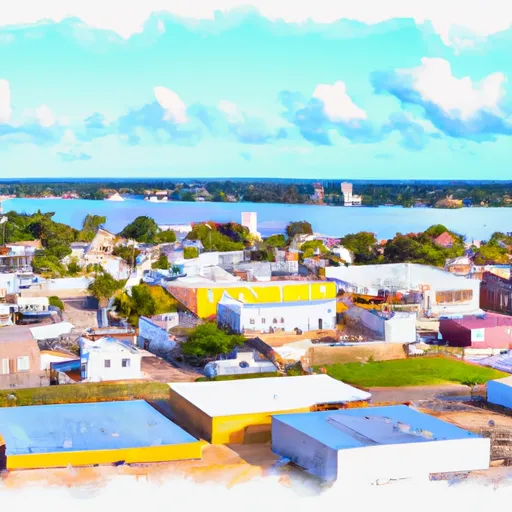-
 Snoflo Premium
Snoflo Premium
Get unlimited access to all our content
With no Ad interruptions! - Start Your Free Trial Login with existing account
Saint-Martinvill
Eden Index
Climate
7.1
•
Recreation
4.8
•
Community
2.2
•
Safeguard
5.1/10

Saint Martinville is a charming city located in south-central Louisiana, known for its rich history, diverse culture, and picturesque landscapes. The climate in the region is typically humid subtropical, characterized by hot and humid summers with temperatures averaging in the 90s°F (32°C) and mild winters with temperatures rarely dropping below freezing. The area experiences frequent rainfall throughout the year.
Situated near the Atchafalaya River, Saint Martinville benefits from its proximity to various hydrology constituents. The river provides opportunities for fishing enthusiasts to catch a variety of freshwater fish such as catfish, bass, and crappie. Additionally, nearby Lake Martin, a wildlife preserve, is home to an array of bird species and offers kayaking and canoeing opportunities.
For outdoor recreation, Saint Martinville has several parks and nature trails, including Longfellow-Evangeline State Historic Site, which provides a glimpse into Louisiana's history and culture. Visitors can explore the park's walking trails, picnic areas, and enjoy birdwatching. The St. Martinville Recreation Park offers a range of amenities, including a swimming pool, tennis courts, and basketball courts.
In conclusion, Saint Martinville, Louisiana offers a pleasant climate, access to various hydrology constituents, and a range of outdoor recreation opportunities, making it an ideal destination for nature lovers and history enthusiasts.
What is the Eden Index?
The Snoflo Eden Index serves as a comprehensive rating system for regions, evaluating their desirability through a holistic assessment of climate health, outdoor recreation opportunities, and natural disaster risk, acknowledging the profound impact of these factors on livability and well-being.
Climate Health Indicator (CHI): 7.1
Saint-Martinvill receives approximately
1580mm of rain per year,
with humidity levels near 89%
and air temperatures averaging around
20°C.
Saint-Martinvill has a plant hardyness factor of
9, meaning
plants and agriculture in this region tend to thrive here all year round.
By considering the ideal temperature range, reliable water supplies, clean air, and stable seasonal rain or snowpacks, the Climate Health Indicator (CHI) underscores the significance of a healthy climate as the foundation for quality living.
A healthy climate is paramount for ensuring a high quality of life and livability in a region, fostering both physical well-being and environmental harmony. This can be characterized by ideal temperatures, reliable access to water supplies, clean air, and consistent seasonal rain or snowpacks.
Weather Forecast
Streamflow Conditions
Atchafalaya - Vermilion
Area Rivers
Atchafalaya - Vermilion
Snowpack Depths
Atchafalaya - Vermilion
Reservoir Storage Capacity
Atchafalaya - Vermilion
Groundwater Levels
Recreational Opportunity Index (ROI): 4.8
The Recreational Opportunity Index (ROI) recognizes the value of outdoor recreational options, such as parks, hiking trails, camping sites, and fishing spots, while acknowledging that climate plays a pivotal role in ensuring the comfort and consistency of these experiences.
Access to outdoor recreational opportunities, encompassing activities such as parks, hiking, camping, and fishing, is crucial for overall well-being, and the climate plays a pivotal role in enabling and enhancing these experiences, ensuring that individuals can engage in nature-based activities comfortably and consistently.
Camping Areas
| Campground | Campsites | Reservations | Toilets | Showers | Elevation |
|---|---|---|---|---|---|
| Acadiana Park | 75 | 42 ft | |||
| Trulock - Arkansas River | 15 | 195 ft | |||
| Lake Fausse Pointe State Park | None | 5 ft | |||
| Saracen Trace RV Park | 52 | 217 ft | |||
| Chemin - A - Haut State Park | None | 125 ft | |||
| Rising Star | None | 196 ft | |||
| Cane Creek State park | None | 257 ft | |||
| Cypremort Point State Park | None | 3 ft |
Nearby Ski Areas
Catastrophe Safeguard Index (CSI):
The Catastrophe Safeguard Index (CSI) recognizes that natural disaster risk, encompassing floods, fires, hurricanes, and tornadoes, can drastically affect safety and the overall appeal of an area.
The level of natural disaster risk in a region significantly affects safety and the overall livability, with climate change amplifying these risks by potentially increasing the frequency and intensity of events like floods, fires, hurricanes, and tornadoes, thereby posing substantial challenges to community resilience and well-being.
Community Resilience Indicator (CRI): 2.2
The Community Resilience Indicator (CRI) recognizes that education, healthcare, and socioeconomics are crucial to the well-being of a region. The CRI acknowledges the profound impact of these elements on residents' overall quality of life. By evaluating educational resources, healthcare accessibility, and economic inclusivity, the index captures the essential aspects that contribute to a thriving community, fostering resident satisfaction, equity, and social cohesion.

